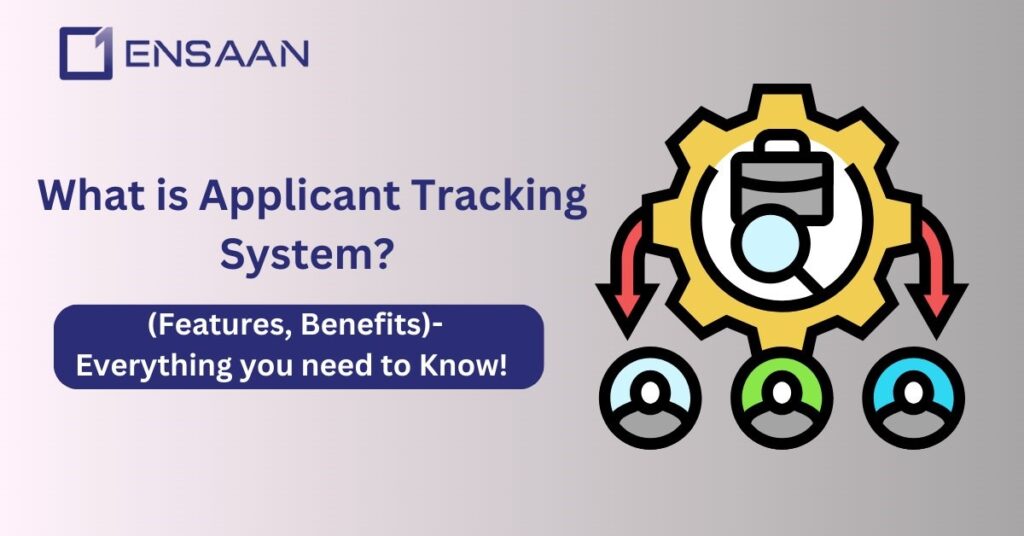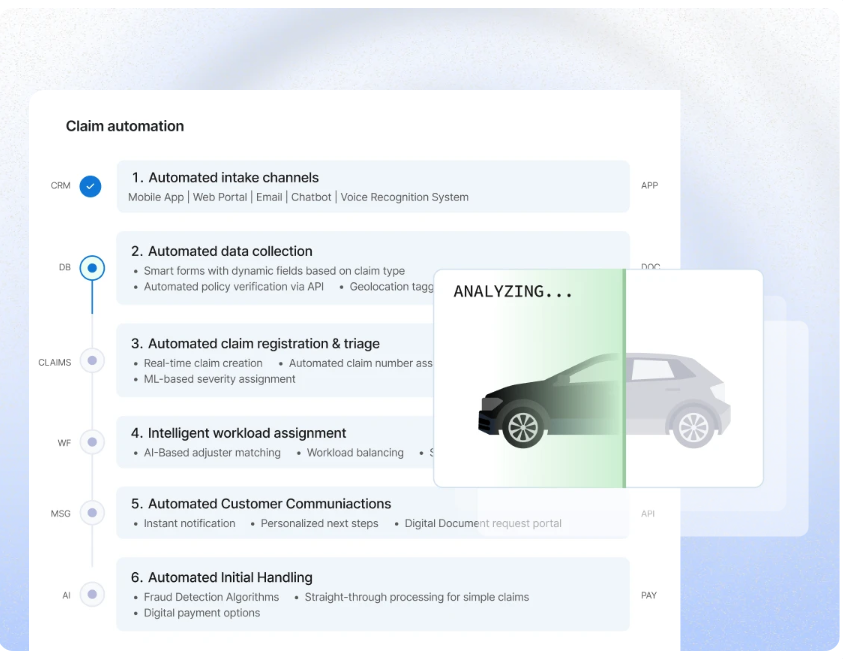Hiring the right talent is one of the most important processes, whether it’s for a small startup or even a large corporation.
But let’s be real, recruitment can get time-consuming and heavy in terms of paperwork.
This is where the Applicant Tracking System, or ATS, steps in.
In today’s digital modern world, an applicant tracking system is a mandatory tool that will enable one to manage applicants, automate the workflow of recruitment, and never let top talents fall through the cracks.
The article will discuss what an ATS is, its features, benefits, and how to choose the right one for business.
Table of contents
What is an Applicant Tracking System (ATS)?
The applicant tracking system is a type of software application designed to support organizations in managing, organizing, and tracking recruitment.
It acts like the backbone of your hiring: it does candidate information gathering, resume screening, interview scheduling, and just about everything, in one location.
It essentially automates most of the manual tasks that come with hiring, therefore making the process a whole lot easier and quicker.
Learn More: Best Applicant Tracking Systems for Mid-Sized or Large Businesses of 2024
Why Do Businesses Use an ATS?
Due to the high volume of applications received by companies for their open positions, it’s always inconvenient to track applicants manually.
With the use of an ATS, it ensures that no candidate can fall through the cracks. It allows the HR teams to remain organized and the companies to:
- Automatically rank and filter candidates.
- Keep track of where each applicant currently stands in the hiring process.
- Have clear communication with the candidates.
An ATS saves time, reduces errors, and therefore helps an organization in hiring the right talent more quickly.
Features of an Applicant Tracking System
The moment of truth. What exactly does it offer? Here are the key features that make it such a wonder:
1. Resume Parsing :
One of the most useful features of an ATS is the parsing it performs.
Instead of having to read each resume manually, the system identifies information relevant to the application and places it into a standardized outline.
In this way, it becomes easy for the recruiters to weed out unqualified candidates.
2. Automated Job Posting and Distribution :
With an ATS, you would be able to publish your job listing on multiple channels, like job boards, career pages, and social media, with just one click.
Such automated distribution means a wider reach of candidates without the headache of updating each site manually.
3. Candidate Screening :
Candidate filtering automatically screens applicants against set criteria such as qualifications, experience, or key words in their resume, which will narrow the pool and allow you to focus efforts only on applicants who are best suited for the position.
4. Interview Scheduling :
Scheduling interviews can be very time-consuming, as most interactions go back and forth.
An ATS makes this process easier because it lets applicants choose free time in the recruiter’s calendar, ensuring simplicity in scheduling and that interviews are better managed.
5. Candidate Relationship Management (CRM) :
Keeping future candidates warm is pretty important.
Most ATS systems will have a little CRM function inside of them that allows automated emails to be sent and/or keeps in touch with candidates during their application process.
That helps in making candidates feel their worth even if they never get the job.
6. Reporting and Analytics :
When it comes to recruitment, data is king, and through reporting and analytics, ATS systems give key metrics on time to hire, cost per hire, and applicant conversion rates.
The data allows businesses to constantly work on perfecting their strategies in recruitment.
Top Benefits of Using an ATS
Why should businesses invest in an ATS? Here are the top benefits:
1. Streamlined Recruitment Process :
An ATS simplifies the recruitment process by automating repetitive tasks, such as sorting resumes and scheduling interviews.
This allows HR teams to focus on the human aspect of recruitment-finding the best fit for the job.
2. Improved Candidate Experience :
A seamless recruitment process speaks volumes about your company’s branding.
An ATS allows automation of communication at regular updates, keeping candidates better informed and more engaged.
3. Enhanced Collaboration Among Teams :
With an ATS, collaboration is pretty easy between the hiring manager, recruiter, and other stakeholders.
Each can share notes and provide feedback or stay updated about the candidate’s progress on one platform.
4. Better Compliance and Documentation :
Most industries have specific legal requirements around hiring. An ATS helps in making sure that recruitment processes are well-documented and follow standards to avoid potential legal issues.
5. Reduced Hiring Costs :
An ATS cuts down on hiring costs by automating certain parts of the recruitment process. Fewer human hours are wasted, and companies can make fast, informed decisions on whom to hire, thus saving money.
How to Choose the Right ATS for Your Business?
With so many ATS options in the market, how do you choose the right one? Here are a few tips:
Step 1: Consider Your Business Size and Needs
Not every ATS is meant for one size. If you are a small company, then you probably don’t need those big guns.
Keep your eyes on the core features you need and go forward with the system that best suits the scale of your company.
Step 2: Look for Integration Capabilities
Your ATS should be well-integrated with other systems within your organization, for instance, payroll and employee management.
If it does, providing direct, solid integration options, the flow of data from one system to another is going to be smooth.
Step 3: Ensure User-friendliness
The best systems are those that are easy to use by the human resources teams and candidates. Intuitive interface, simple navigation, and minimal learning curve are necessary for high adoption rates within your team.
Step 4: Check for Customization Options
Your recruitment requirements will change with time, and your ATS should also grow with them. Where possible, seek a system that you can customize for your use-say, custom workflows, reports, or even candidate communication templates.
Future of Applicant Tracking Systems
The future for ATS looks brilliant, especially with more AI and machine learning advancements.
One could expect more of the AI-powered features: predictive analytics for hiring success, automated candidate matching, and chatbots that make sure candidates are in the loop at all stages of the process.
As businesses continue to evolve, so will ATS systems, becoming even more intuitive and efficient at helping companies secure the best talent.
Why you Choose Ensaantech for ATS?
Ensaantech offers an easy-to-use, intuitive, user-friendly ATS to suit any business size. It automates your hiring-related tasks and saves your time by reducing mistakes.
It will seamlessly integrate with other HR tools and assure smooth data flow.
AI-powered insights from Ensaantech make the hunt for top talent a whole lot faster. It creates a better candidate experience-keeping them in the know through every step of the way.
Your data is secure, and you are compliant with the law.
Ensaantech also features flexible pricing options and reliable customer support to make sure it’s a smart and cost-effective investment for all your hiring needs.
Conclusion
In today’s competitive job market, an Applicant Tracking System is no longer a high-end luxury but a high-priority need.
From easing the recruitment process to making the candidates’ experience more enjoyable to reducing costs connected with hiring, the advantages of an ATS are simply undeniable.
While choosing the appropriate ATS for your business, focus on features meeting your particular needs and find a system that can grow with you.
With an effective ATS, you’ll be off to a pretty great start in making better hiring decisions and, ultimately, being more efficient.
FAQs
Applicant Tracking Systems is a software tool to help companies collect, organize, and track applicants throughout the recruitment process, from beginning to end.
Most ATS systems offer payroll software integration, HR management systems, and other integrations across business lines to funnel data smoothly.
An ATS automates a lot of recruitment tasks, which include resume screening, interview scheduling, and candidate communication.
No, systems of ATS come in different sizes and varied price ranges; therefore, they might be appropriate for businesses of all sizes, including startups to big enterprises.
You should consider your business size, integration needs, ease of use, customization options, and your overall recruiting objectives.








